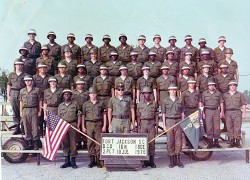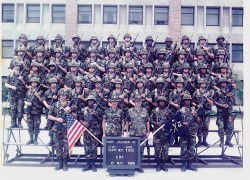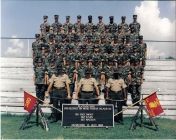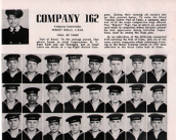Specialty Summary. Performs, plans, leads, supervises, instructs, and evaluates Special Operations Weather Teams. May be employed alone or as part of an Air Force, joint, interagency or coalition force, to support Combatant Commander’s objectives and may operate under austere conditions for extended periods. Capable of operating in the six geographic disciplines: mountain, desert, arctic, urban, jungle and water, day or night, to include friendly, denied, hostile, or sensitive areas. Provides tactical-level intelligence, surveillance and reconnaissance to enable decision superiority and application of airpower across the full spectrum of military operations. Performs and manages the collection, analysis, and forecast of meteorological, oceanographic and space environmental conditions. Tailors forecast information for integration into military decision-making and intelligence preparation of the battlespace activities.
Duties and Responsibilities:
Collect, analyze, tailor and integrate meteorological, oceanographic and space environmental information from data sparse, non-permissive, hostile and data denied areas into military decision-making processes.
Observes current environmental conditions. Evaluates, records and transmits surface weather, oceanographic, geographic, riverine and space environment observations.
Operates atmospheric and space-sensing instruments and computer workstations to interrogate data from weather radars, meteorological satellites, and products provided by military, national, and international weather agencies.
Uses detailed understanding of the atmosphere and space environment to translate raw data into actionable, decision-quality environmental information.
Observes and forecasts meteorological and oceanographic conditions from data sparse, non-permissive, hostile and data denied locations. Issues advisories, watches and warnings to alert combatant commanders of dangerous or inclement terrestrial and space environmental events.
Understands war fighter tactics, techniques and procedures. Integrates weather information into the decision-making process at all levels to mitigate and exploit environmental information on operations to maximize combat power.
Manages environmental collection operations, ensures quality, and adapts and manages resources to meet mission requirements. Recognizes and exploits environmental analysis and data to enhance training and combat operations.
Performs tactical mission planning and preparation. Participates in Military Decision Making Process. Briefs joint force commanders and staff on environmental predictions affecting operations. Prepares personnel and equipment for military operations.
Conducts reconnaissance and surveillance of routes, areas, zones and objectives of interest. Operates, emplaces and services ground based sensors and utilizes unmanned aerial systems to support reconnaissance. Reports current battlefield information.
Deploys into semi- and non-permissive forward areas and forward operating locations by land (mounted, special purpose vehicle or dismounted), sea (surface or subsurface naval vessel, small watercraft, or surface swim) or air (parachute, airmobile, air-land) to participate in the full spectrum of military operations to include air expeditionary force, force projection, direct action, counterterrorism, counter-proliferation, foreign internal defense, humanitarian assistance, special reconnaissance, personnel recovery, noncombatant evacuation operations, counter narcotic, operational preparation of the environment, and advanced force operations. Uses demolitions to create or remove obstacles to maneuver and to prepare tactical sites. Maintains qualification on primary assigned weapons.
Specialty Qualifications.
Knowledge. This specialty requires knowledge of: mission planning and preparation; reconnaissance principles and procedures; aircraft flight characteristics; map, aeronautical chart, and publication use; survival techniques; night vision equipment, GPS and other operational equipment; joint service operations; navigation techniques; movement and route selection; alternate insertion and extraction methods; parachute procedures and equipment; small unit tactics; amphibious operations; small arms and crew served weaponry; destructive demolition applications; communications and signaling; antenna theory; photographic documentation; legal responsibilities and ethics; vehicle operations; individual fitness; characteristics and principles of the terrestrial and space environments; observation, analysis, prediction, and integration of terrestrial and space environment information with and without detailed data; operation and operator maintenance of fixed and deployable meteorological and space weather instruments and systems; operation and operator maintenance of communications and computer systems; use of weather products from operational and strategic centers; and military weapons systems and decision-making processes.
Education. For entry into this specialty, a high school diploma or equivalent is required. Courses in physics, chemistry, earth sciences, geography, computer sciences, and mathematics are desirable.
Training. Completion of the following training is mandatory:
For award of AFSC 1W032, completion of the following formal courses:
Special Operations Weather Selection Course.
Special Operations Weather Course.
Airborne Parachutist Course.
Level C Survival, Evasion, Resistance and Escape training.
Water Survival Course.
Underwater Egress Training Course.
Special Operations Weather Apprentice Course.
Experience. The following experience is mandatory for award of the 1W0X2 AFSC:
1W052. Qualification in and possession of AFSC 1W032. Also, experience in reconnaissance surveillance, combat enabling tasks, experience in collecting and analyzing environmental data, performing meteorological watch, preparing forecast products, and issuing weather watches, warnings, and advisories.
1W072. Qualification in and possession of AFSC 1W052. Also, experience performing and supervising duties involving reconnaissance, surveillance and combat enabling tasks. Experience in forecasting local area and mesoscale weather features, determining weather effects on weapons systems, and preparing and delivering weather briefings and mission execution forecasts.
1W092. Qualification in and possession of AFSC 1W072. Also, experience managing operations involving reconnaissance, surveillance, combat enabling tasks, managing personnel, providing reconnaissance leadership and training, tailoring unit capabilities, and managing reconnaissance resources to meet mission requirements.
Other. The following are mandatory as indicated: For entry into this specialty: Ability to speak English distinctly. Successful completion of the physical ability and stamina test (PAST). For entry, award, and retention of AFSCs 1W012/32/52/72/92: Physical qualification for parachute duty IAW AFI 48-123, Medical Examinations and Standards. Visual acuity correctable to 20/20. Normal color vision and depth perception as defined in AFI 48-123. For entry, award and retention of AFSCs 1W032/52/72/92: Qualification to operate government vehicles according to AFI 24-301, Vehicle Operations. Qualification, currency, and proficiency as a static line parachutist. Qualification to bear firearms according to AFIs 31‑207, Arming and Use of Force By Air Force Personnel; 36‑2226, Combat Arms Training and Maintenance (CATM); AFSOCI 36-2204, Special Tactics Operator Training; and AFSOCI 36-2206, Command Job Qualification Standard (CJQS) For Weather Personnel. Specialty requires routine access to Secret material or similar environment. Award and retention of AFSCs requires completion of a current National Agency Check, Local Agency Checks and Credit (NACLC) according to AFI 31-501, Personnel Program Management. For award and retention of AFSCs 1W052/72/92, must maintain an Air Force Network License according to AFI 33‑115, Vol 2, Licensing Network Users and Certifying Network Professionals. NOTE: Award of the 3-skill level without a completed NACLC is authorized provided an interim Secret security clearance has been granted according to AFI 31-501.




